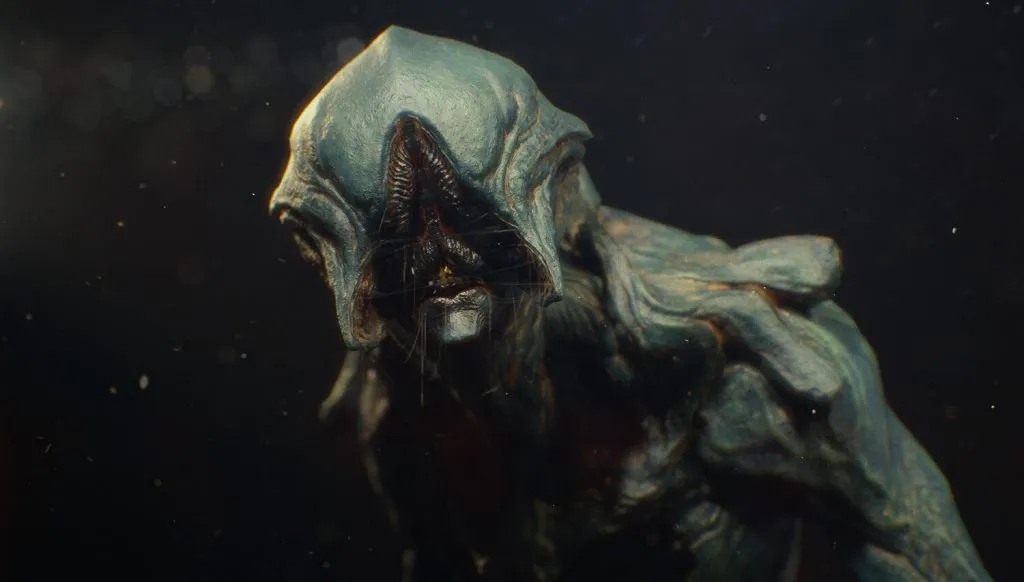Creature Prototyping in Character Creator 3 with Pablo Munoz Gomez
Pablo Munoz Gomez covers the full pipeline to produce a creature prototype and get it ready for animation. The course breaks down various features in Character Creator 3 to tweak a human base mesh and set it up in ZBrush for sculpting. Munoz Gomez also discusses the texturing process in Substance Painter as well as other workflows to get the creature ready for posing and animation using Character Creator 3 and iClone.
Download Character Creator here.
Pablo Munoz Gomez is a concept and character artist who founded ZBrushGuides and 3Dconceptartist. His work involves visual development and sculpting in both 3D and traditional media. Pablo is an instructor at The Extra Mile course and has created many ZBrush training resources over the years.
In this interview, he shares how he developed his new course, his favorite Character Creator 3 tools, and more.
Behind the course:
For the course, I tried to focus on the workflows and the capabilities of the tools. I found Character Creator 3 (CC3) to be a great software for prototyping and to speed up the process of setting up human characters. However, I personally enjoy creating fantasy or sci-fi creatures a lot more, so I wanted to find a way to incorporate CC3 in my workflow using other tools that I use often like ZBrush and Substance Painter to create my creatures. Once I figured out a way that I can seamlessly go back and forth between CC3 and ZBrush, I was able to produce variants of the design very quickly while testing things like the pose, propositions, size, silhouettes without having to complete the sculpting of the character first, thanks to the rig and base mesh of CC3.
I emphasize the importance of the iteration process to refine the concept and idea. Usually, this process of ‘thumbnailing’ and exploration of the design is usually associated with a pre-production stage where you want to get the design approved before going into production. With the workflow I share, you can have a rough idea of what you are going for, but keep changing things while you produce the asset. In other words, you could have your textures and sculpted details ready for render, and at the last minute, change proportions or scale up a muscle to change the silhouette all within the pose you set up or even the animation you are using to test the deformation of the creature.
Most memorable learning experience:
It’s a difficult question to answer because there are few very different experiences that have influenced my decisions and taught me valuable things throughout my career. I’d say anything that helps me keep my ego in check is a necessary and important learning experience. I’ve had incredible mentors and friends that steered me in the right direction.
I have also been privileged to witness the skill evolution of my own students and that is a learning experience for me as well. They all come from different backgrounds with different circumstances and it puts things in perspective for me. But, if I have to pick one thing as the most memorable experience, I’d say it was a masterclass I took back in 2010 called ‘Entrepreneurship’ for artists with a great teacher.
This class had a lot to do with strategies to validate ideas, relationships with customers, how to focus on ‘value’, not on ‘price’, etc. My big takeaway was on the importance of valuing your commitment and dedication as an artist while balancing other aspects of your life (that I used to neglect). So I think the biggest lesson for me has been on balancing my passion with the other parts of my life.
1 piece of advice:
When I think about what advice I could give to a younger version of myself, I immediately think about the mistakes I made or where I went wrong. So that the advice ends up being about avoiding very specific things that happened to me or how to make different choices.
In retrospect, I believe there is a lot of value in making mistakes and struggling with certain things. In fact, the faster and more mistakes you make, the faster you’ll figure out what to do or how to do something right. I know this is counter-intuitive but from my experience, whenever I hit an obstacle, it becomes an opportunity to learn from it. Most of the things that I have shared on my ZBrushGuides website, for instance, comes from a process of testing something I didn’t know before and trying to understand certain processes in more depth, to finally come up with a solution. So I’d say, don’t dismiss an attempt to do something as a pure failure. Instead, train your eye to recognize where you went wrong and take the time to learn from the mistake to fix it so you can improve faster.
For more specific advice, I’d simply suggest reading more, to go to as many conferences, meetups, and mastermind groups as possible. Find a mentor or a community of artists (online or not) that holds you accountable, where you can share your work, get honest feedback, and constructive criticism.
Favorite Character Creator 3 feature:
The best features for me as a concept and character artist are the morphs and the fact that there is a rig for posing. The morphs are great to completely change the basemesh of your character with simple sliders and the rig allows me to pose the character really quickly to start the iteration process with a pose close to what the final one would be.
ArtStation Learning courses are included in all ArtStation premium subscriptions. Find out more >
See more of Pablo’s work here.

























